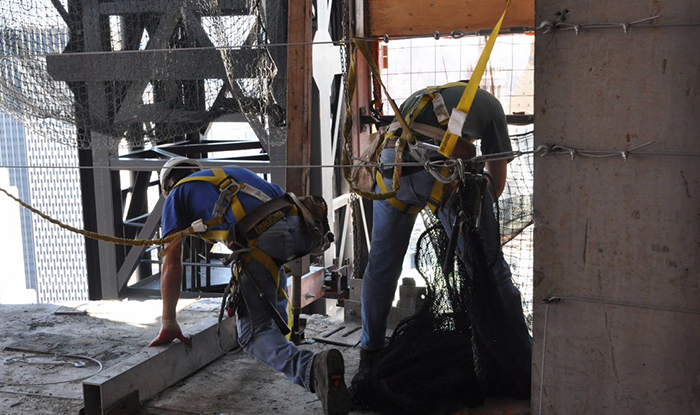Photo Courtesy of DOB
According to the report, job losses were partially offset by employment gains in construction.
By Forum Staff
The City economy apparently hit the snooze button late last year, as gross city product grew only 1.2 percent in the fourth quarter of 2017 (October through December), according to an analysis released on Thursday by Comptroller Scott Stringer.
In the final three months of 2017, during which the national economy expanded by 2.6 percent, private-sector employers in the five boroughs shed 17,300 jobs, including 15,700 gigs in mediфum-wage industries, according to the comptroller’s Quarterly Economic Update. For all of 2017, Big Apple private-sector employers added jobs 71,400 in 2017, compared to 83,600 new private-sector jobs in 2016. However, as Stringer pointed out, employment losses were partially offset by job gains in construction industries and financial activities.
Further findings in the fourth quarter update include:
Unemployment Declines across City: The unemployment rate fell in all five boroughs to their lowest fourth-quarter levels in at least 12 years, with Queens leading the way at 3.7 percent.
Average Hourly Earnings and Personal Income Tax Collections Rose: Changes to the U.S. tax code at the beginning of 2018 appear to have had a significant impact on personal income tax collections at the end of 2017, Stringer noted. Beginning in tax year 2018, taxpayers will lose the ability to deduct more than $10,000 in state and local taxes, he warned.
On a year-over-year basis, personal income taxes withheld from paychecks rose 16.2 percent to more than $2.2 billion in the fourth quarter, while estimated tax payments, which reflect trends in taxpayers’ non-wage income, including interest earned, rental income, and capital gains, more than doubled.
Average hourly earnings of all private NYC employees, another proxy for personal income, rose 3.7 percent on a year-over-year basis to $35.52 in the last quarter of 2017, the biggest fourth-quarter gain since 2008.
Housing Market Prices Increase in Outer Boroughs: Unlike Manhattan, housing market prices increased slightly in Brooklyn to $948,706. Similarly in Queens, the average sales price rose 8.9 percent to $624,698.
Metropolitan Transportation Authority Bus Ridership Continued Decline: Average weekday ridership on MTA NYC Transit fell 0.9 percent in October and November of 2017 from a year ago, as bus ridership fell 3.4 percent. During the same period, ridership on the Long Island Rail Road fell 0.5 percent, but increased 0.1 percent on Metro North.
For the entirety of 2017 through November, Stringer noted, average weekly ridership fell 1.2 percent on MTA subways and 5.5 percent on the buses.
Leading Economic Indicators are Positive: The City’s leading economic indicators were mixed, but implied continued expansion, according to the comptroller. The current business condition index provided by ISM-New York, Inc. (which measures the current state of the economy from the perspective of business procurement professionals) fell to 55.3 percent in the fourth quarter, below the 56.4 percent in the prior quarter. However, Stringer explained that a reading greater than 50 percent indicates growth.
“The weakness in employment growth should serve as a reminder that the robust rate of job creation in the city over the last several years won’t continue forever,” Stringer added. “We will continue to monitor the economy’s condition closely, but this quarter’s results highlight the need for prudence in the management of our finances.”

